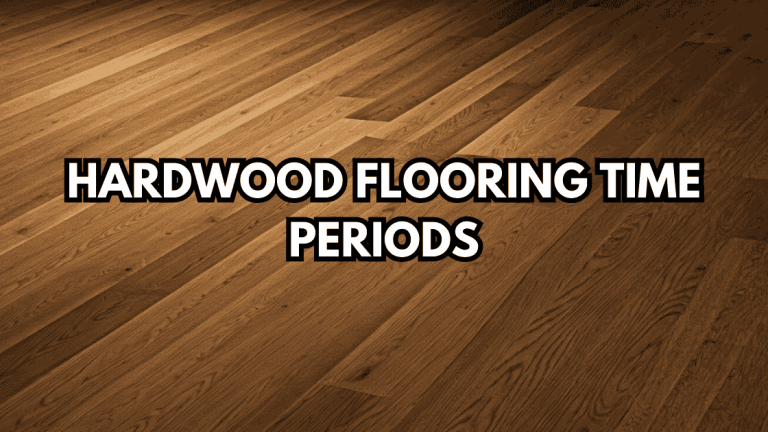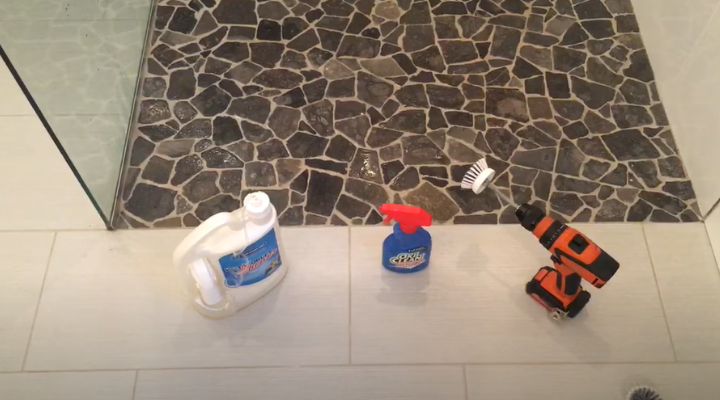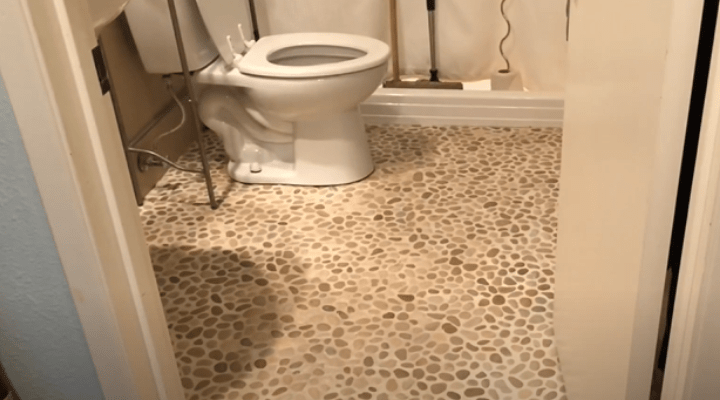What Causes Dark Spots On Hardwood Floors?
Hardwood floors are a timeless and elegant feature in any home, but they can sometimes develop imperfections that detract from their beauty. One common issue many homeowners face is the appearance of dark spots on hardwood floors.
These spots can be caused by a variety of factors, from water damage to improper cleaning methods, and they not only affect the floor’s aesthetics but can also signal underlying problems.
Understanding what causes dark spots on hardwood floors is the first step to addressing the issue and ensuring the longevity of your flooring investment.
Common Causes of Dark Spots
Dark spots on hardwood floors can result from several common causes, each requiring specific attention. Such as:
| Cause | Description |
|---|---|
| Water Damage | Spilled liquids, leaks, or high humidity can penetrate the wood, leading to discoloration over time. |
| Pet Stains | Urine from pets can seep into the wood and cause permanent dark marks if not cleaned promptly. |
| Mold and Mildew Growth | Prolonged exposure to moisture can create the perfect environment for mold or mildew to develop. |
| Sunlight Exposure | UV rays from sunlight can fade the wood unevenly, sometimes leaving dark patches where items were placed. |
| Chemical Spills | Harsh cleaning agents or spills from chemicals can react with the finish or wood, causing dark spots. |
Additional factors include inadequate cleaning, which allows dirt to accumulate, or worn-out finishes that expose the wood to damage. Identifying the specific cause of dark spots on hardwood floors is crucial for determining the most effective remedy and preventing future occurrences. With proper care and attention, you can maintain the natural beauty of your hardwood floors for years to come.
Environmental Factors
Environmental conditions play a significant role in the development of dark spots on hardwood floors. High humidity levels can cause moisture to accumulate, leading to water stains and even mold growth. When the air contains excessive moisture, hardwood absorbs it, resulting in discoloration and warping over time.
Temperature fluctuations are another culprit. Rapid changes in temperature can expand and contract the wood, weakening its protective finish and making it more susceptible to stains. Inadequate ventilation further exacerbates these issues, as it allows moisture to linger, creating a breeding ground for mildew and dark spots.
Additionally, homes in climates with extreme weather variations often see a higher prevalence of environmental-related floor discoloration. To protect your hardwood floors, maintaining a stable indoor environment with proper ventilation, consistent temperature, and controlled humidity is essential. These precautions can prevent many of the environmental factors that cause dark spots.
Maintenance and Cleaning Issues
Improper maintenance and cleaning practices are common contributors to dark spots on hardwood floors. Failing to clean spills immediately can allow liquids to seep into the wood, causing stains that are difficult to remove. Similarly, using too much water during cleaning or leaving damp mops on the floor can lead to moisture absorption, which weakens the wood’s finish and results in discoloration.
Using the wrong cleaning products is another major issue. Harsh chemicals or abrasive cleaners can strip the protective layer of your floor, exposing the wood to damage and increasing its vulnerability to dark spots. Over time, neglecting regular cleaning can allow dirt and debris to accumulate, which can grind into the surface and leave unsightly marks.
To avoid these problems, it’s essential to follow proper cleaning routines, use hardwood-safe products, and promptly address spills or stains to maintain the beauty of your flooring.
Wood Type and Finish Considerations
The type of wood and its finish significantly influence the likelihood of dark spots on hardwood floors. Different wood species vary in hardness, porosity, and resistance to stains. For instance, softer woods like pine are more prone to dents and moisture absorption, which can lead to discoloration. In contrast, harder woods like oak or maple tend to be more resilient but are not immune to damage if the finish wears down.
The finish applied to the wood also plays a critical role in protecting it from stains. A high-quality polyurethane or oil-based finish provides a durable barrier against moisture and spills. However, as finishes age and wear out, they become less effective, leaving the wood vulnerable to dark spots.
Regularly refinishing hardwood floors and choosing the right wood type for your environment can help minimize the risk of dark spots while preserving the floor’s appearance and durability.
Inspection and Diagnosis
Identifying the cause of dark spots on hardwood floors requires a thorough inspection and diagnosis. Start by examining the location of the spots. If they are near windows, doors, or areas exposed to water, moisture damage could be the likely cause. Look for additional signs like warping, cupping, or mildew odor, which often accompany water-related issues.
If the spots are concentrated in areas where pets frequent, pet urine stains could be responsible. These stains typically have a distinct odor and can penetrate deep into the wood if not treated immediately. For darker areas without obvious moisture exposure, consider whether harsh cleaning chemicals or spills might have caused the damage.
To confirm the diagnosis, you can use moisture meters to check for high moisture content in the wood or consult a professional for more advanced testing. Accurate identification of the underlying problem is essential for determining the right repair method and preventing future issues.

Solutions for Removing Dark Spots
Removing dark spots from hardwood floors depends on the severity and cause of the stains. Here are some effective solutions:
DIY Methods
- Vinegar and Baking Soda: Mix equal parts of vinegar and baking soda to create a paste. Apply it to the stain, let it sit for a few minutes, then gently scrub with a soft cloth.
- Hydrogen Peroxide: Soak a cotton cloth in hydrogen peroxide and place it over the stain. Leave it overnight to allow the peroxide to bleach the dark spot.
- Sanding and Refinishing: For deeper stains, sand the affected area with fine-grit sandpaper. Reapply a matching finish to restore the wood’s appearance.
Professional Repair Options
- Deep Cleaning: Professional cleaners use specialized tools to lift embedded stains.
- Spot Refinishing: Professionals can sand and refinish localized areas for severe damage.
- Board Replacement: For irreversible stains, replacing individual planks might be the best option.
Regular maintenance and timely cleaning are essential to prevent dark spots and minimize the need for extensive repairs.
When to Consult a Professional?
Dark spots on hardwood floors can be caused by a variety of factors, including moisture, sunlight, mold, or wear over time. While minor issues might be resolved with DIY cleaning and maintenance, there are times when it’s best to consult a professional:
- Persistent Stains: If dark spots don’t respond to regular cleaning methods, it might indicate a deeper issue, such as water damage or mold growth, which could require professional treatment.
- Water Damage: If the dark spots appear to be caused by water exposure, and the wood has started to warp or buckle, this can indicate significant moisture damage. A professional can assess the extent of the damage and recommend repair or refinishing.
- Mold or Mildew: If the dark spots are accompanied by a musty smell or visible mold, it’s crucial to call a professional who can safely remove the mold and restore the flooring.
- Discoloration from Sunlight or Wear: If the dark spots seem to be due to sun exposure or natural wear, a professional can help you restore the finish, protect the floor with a new coating, or refinish the surface.
- Structural Issues: If the dark spots seem linked to deeper issues like subfloor problems or extensive damage, a professional contractor can inspect the floor’s structure and advise on repairs.
- Refinishing Needs: If the hardwood is severely scratched or discolored across large areas, a professional refinisher can sand down the floors and apply a new protective finish.
If you’re unsure of the cause or unsure how to fix it, contacting a professional will ensure the right steps are taken to restore the beauty of your hardwood floors.
Final Verdict
Lastly, dark spots on hardwood floors can result from a variety of factors, including moisture damage, exposure to sunlight, mold growth, or general wear and tear. Identifying the underlying cause is crucial to determining the appropriate solution.
While minor issues can often be addressed with regular cleaning or refinishing, persistent or extensive damage may require professional intervention. Consulting a flooring expert can help ensure proper restoration and preservation of your hardwood floors, maintaining their beauty and longevity for years to come.






